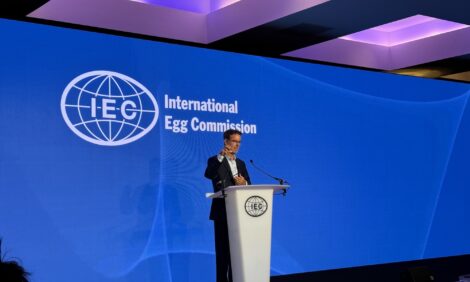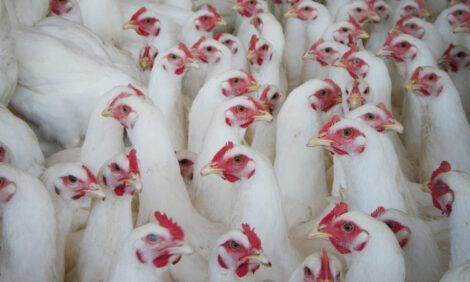



Poultry CRC Broiler Breeder Research in a Commercial Setting
Poultry CRC-supported PhD student, Sarah Weaver, at the University of Adelaide in Austalia in researching the relationship between breeder hen environment and subsequent broiler chick performance.In particular, Sarah Weaver is looking at yolk composition, as this can be influenced by maternal environment.
Yolk compounds critically influence offspring morphology, physiology and behaviour. Ho et al. (2011) demonstrated this by transferring broiler and layer chicken embryos onto their reciprocal yolk environments, i.e. layer embryos onto broiler yolk and vice versa. Embryos subsequently took on the phenotype reflective of the yolk source, rather than their genetically-programmed phenotype.

Ms Weaver’s project seeks to expand Ho’s findings to identify what maternal environmental factors and associated key compounds present in the yolk influence both embryonic development and post-hatch performance.
Her first trial was a broad investigation of the impact genetic selection (for post-hatch traits) has on yolk composition. It involved collecting eggs from both broilers and layers to investigate yolk composition, with a focus on hormones related to growth.
For this part of the work, Ms Weaver travelled to the University of Western Australia where she was aided in the development of hormone assays. At this stage, she also had contact with HiChick Breeding Company, which has previous connections with the South Australian Research and Development Corporation (SARDI) and the University. HiChick was able to provide her with broiler eggs, which are not easy to come by without an industry contact.
Once differences in yolk composition between breeds were highlighted, the focus shifted towards within breed effects, in particular the impact the maternal environment. HiChick was interested in Ms Weaver’s subsequent feeding trial (Figure 1 below), where the impact of maternal diet (using corn or wheat-based diet model) on progeny performance was studied.
As a broiler breeder company, HiChick was interested in the effects of imported genetics (US/UK) on progeny performance. HiChick therefore permitted Ms Weaver to conduct her trials at HiChick, using their facilities to the benefit of both parties.
She said: “It was good to see how the broiler industry works. By conducting the maternal diet trial on farm, I was able to identify what other maternal management practices used by industry have the potential to impact progeny performance. So in my research I went broader again, where I started in the lab focusing on hormone concentrations, I now have expanded to performing trials in a real-world commercial setting.”

Ms Weaver's next trial – on the impact of maternal feed restriction on offspring development – with HiChick involved three experiments: broiler breeder hen performance, offspring embryonic development (ED1 to hatch), and offspring post-hatch performance (hatch to day 42).
For each experimental group, maternal body weight was measured from about 24 to 40 weeks (peak-lay), as were feed intake, egg production and stress (corticosterone, H/L Ratio). Broiler breeder hens were maintained in low, medium and high bodyweight groups (through feed restriction) to study the impact of maternal bodyweight on progeny performance. This trial yielded some very interesting results (Figure 2).

In the feed restriction trial, it was assumed that heavy hens would drop dramatically in terms of egg production. However, the results were unexpected, with a significant increase in egg production amongst these hens. Thus, with a slight increase in feed intake (20g per bird per day), an increase of about 200 eggs across the trial period was seen.
HiChick is very interested in this outcome and is continuing to monitor levels of fertility and total egg production in these birds, to see if they drop off or continue consistently until end of lay.
Ms Weaver is enjoying her collaborative relationship with HiChick, understanding that it is a commercial business and that the company allowing her to conduct trials there is of major benefit to her. She conscientiously adheres to HiChick’s strict quarantine protocols and appreciates HiChick’s willingness to be involved in both her research and overall professional development.
November 2014











